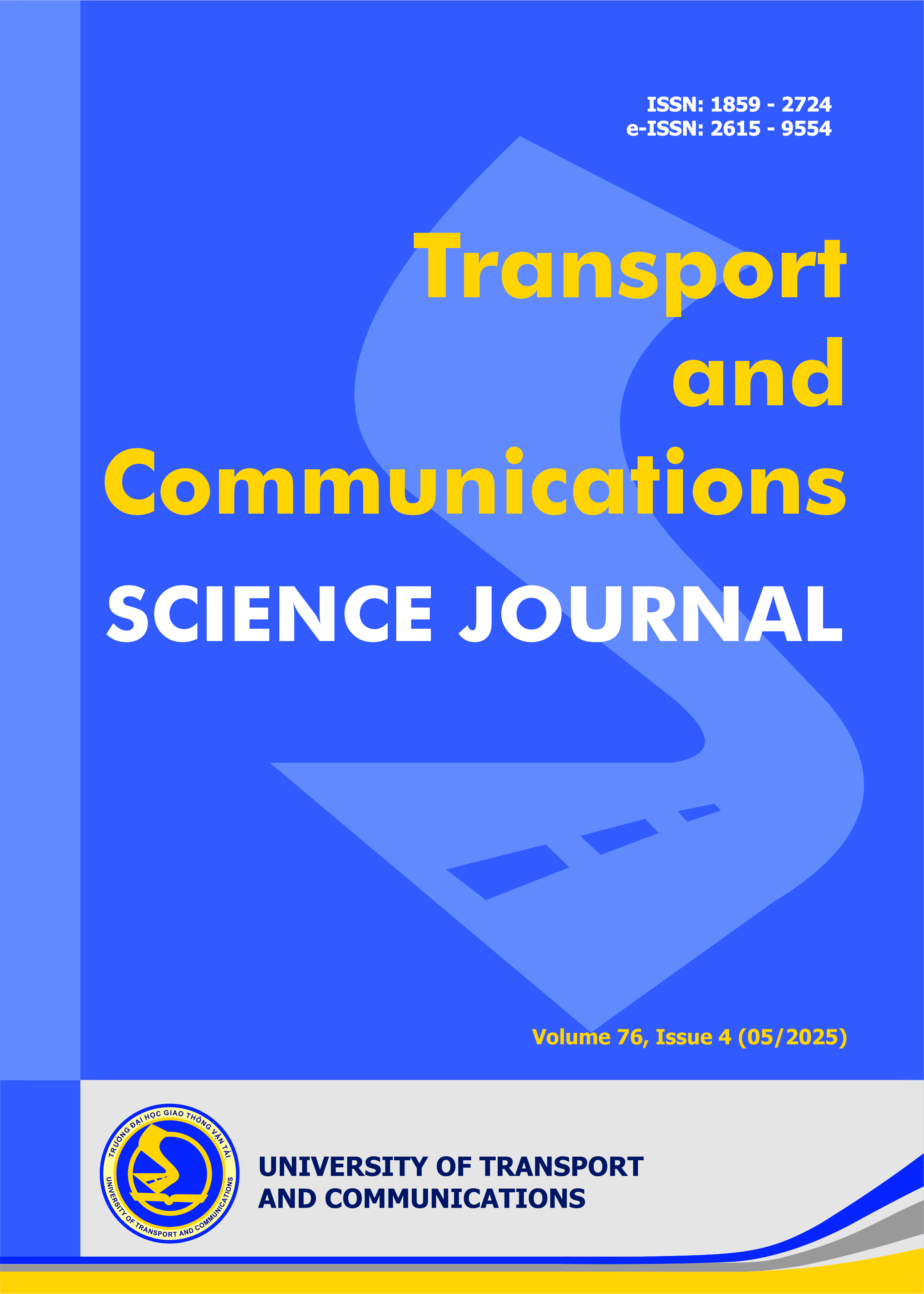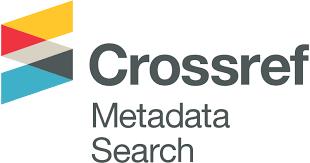Crack detection on concrete surfaces using the YOLOv8 quantization model
Email:
ngobinh74@utc.edu.vn
Tóm tắt
The condition of concrete structures’ surfaces, most importantly the condition of cracks on the surface and their development over time, is an important and common criterion used to diagnose health conditions and determine their service life. Rapid collection, identification, and monitoring of concrete structures’ surfaces to assess the condition of bridge structures requires a fast-acting system that can meet the actual speed of the inspection process. This article introduces a YOLOv8 quantization model for rapid crack detection in concrete structures, leveraging GPU acceleration suitable for real-time video analysis during bridge inspections. The method incorporates histogram equalization and image enhancement to mitigate lighting issues and improve crack visibility. INT8 quantization reduces model size and accelerates processing while maintaining accuracy through dataset calibration. Converted to TensorRT and integrated into the inference pipeline for optimized GPU and memory management, the YOLOv8 quantization model achieves at least 30 FPS using full HD video footage. Field tests with NVIDIA GPUs demonstrated a 5x reduction in processing time, a 5x FPS increase, and a 6x improvement in GPU utilization, all while maintaining similar RAM usage. The quantum YOLOv8 model is optimized for NVIDIA GPUs, achieving a balance between accuracy and processing speed, allowing workers to analyze full HD videos in real-time at a rate of at least 30 FPS during field inspectionsTài liệu tham khảo
[1]. Q. Zou, Y. Cao, Q. Li, Q. Mao, S. Wang, CrackTree: Automatic crack detection from pavement images, Pattern Recognition Letters, 33 (2012) 227-238. https://doi.org/10.1016/j.patrec.2011.11.004
[2]. M. Gavilán, D. Balcones, O. Marcos, D.F. Llorca, M.A. Sotelo, I. Parra, M. Ocaña, P. Aliseda, P. Yarza, A. k;mAmírola, Adaptive Road Crack Detection System by Pavement Classification, Sensors, 11 (2011) 9628-9657. https://doi.org/10.3390/s111009628
[3]. Ngo Van Minh, Influence of shear stress to the formation of inclined cracks in webs of post-tensioned concrete box girder bridge constructed by the free cantilever method, Transport and Communications Science Journal, 70 (2019) 21-31. https://doi.org/10.25073/tcsj.70.1.40
[4]. Chul Min Yeum, Shirley J. Dyke, Vision‐based automated crack detection for bridge inspection, Computer-Aided Civil and Infrastructure Engineering, 30 (2015) 759-770. https://doi.org/10.1111/mice.12141
[5]. T. Nishikawa, J. Yoshida, T. Sugiyama, Y. Fujino, Concrete crack detection by multiple sequential image filtering, Computer-Aided Civil and Infrastructure Engineering, 27 (2012) 29-47. https://doi.org/10.1111/j.1467-8667.2011.00716.x
[6]. M. Salman, S. Mathavan, K. Kamal, M. Rahman, Pavement crack detection using the Gabor filter, 16th International IEEE Conference on Intelligent Transportation Systems (ITSC 2013), The Hague, Netherlands, (2013) 2039-2044. https://doi.org/10.1109/ITSC.2013.6728529
[7]. Y. Fujita, Y. Hamamoto, A robust automatic crack detection method from noisy concrete surfaces, Mach Vis Appl, 22 (2011) 245–254. https://doi.org/10.1007/s00138-009-0244-5
[8]. R. G. Lins, S. N. Givigi, Automatic Crack Detection and Measurement Based on Image Analysis, IEEE Transactions on Instrumentation and Measurement, 65 (2016) 583-590. https://doi.org/10.1109/TIM.2015.2509278
[9]. L. Ying, E. Salari, Beamlet transform based technique for pavement image processing and classification, 2009 IEEE International Conference on Electro/Information Technology, Windsor, ON, Canada, (2009) 141-145. https://doi.org/10.1109/EIT.2009.5189598
[10]. A. Cubero-Fernandez, Fco. J. Rodriguez-Lozano, Rafael Villatoro, Joaquin Olivares, Jose M. Palomares, Efficient pavement crack detection and classification, J Image Video Proc., 39 (2017). https://doi.org/10.1186/s13640-017-0187-0
[11]. H. Oliveira, P. L. Correia, Automatic Road Crack Detection and Characterization, IEEE Transactions on Intelligent Transportation Systems, 14 (2013) 155-168. https://doi.org/10.1109/TITS.2012.2208630
[12]. Y. Shi, L. Cui, Z. Qi, F. Meng, Z. Chen, Automatic Road Crack Detection Using Random Structured Forests, IEEE Transactions on Intelligent Transportation Systems, 17 (2016) 3434-3445. https://doi.org/10.1109/TITS.2016.2552248
[13]. Fu Tao Ni, Jian Zhang, ZhiQiang Chen, Pixel‐level crack delineation in images with convolute ional feature fusion, Structural Control Health Monitering, (2019) 26:e2286. https://doi.org/10.1002/stc.2286
[14]. L. Zhang, F. Yang, Y. Daniel Zhang, Y. J. Zhu, Road crack detection using deep convolutional neural network, 2016 IEEE International Conference on Image Processing (ICIP), Phoenix, AZ, USA, (2016) 3708-3712. https://doi.org/10.1109/ICIP.2016.7533052
[15]. Xincong Yang, Heng Li, Yantao Yu, Xiaochun Luo, Ting Huang, Xu Yang, Automatic pixel‐level crack detection and measurement using fully convolutional network. Computer-Aided Civil and Infrastructure Engineering, 33 (2018) 1090-1109. https://doi.org/10.1111/mice.12412
[16]. Xiaoning Cui, Qicai Wang, Jinpeng Dai, Rongling Zhang, Sheng Li, Intelligent recognition of erosion damage to concrete based on improved YOLO-v3, Materials Letters, 302 (2021) 130363. https://doi.org/10.1016/j.matlet.2021.130363
[17]. Long Ngo, Chieu Luong Xuan, Hoang Minh Luong, Binh Ngo Thanh, Dung Bui Ngoc, Designing image processing tools for testing concrete bridges by a drone based on deep learning, Journal of Information and Telecommunication, 7 (2023) 227–240. https://doi.org/10.1080/24751839.2023.2186624
[18]. Viraja1 crack detection: https://github.com/viraja1/crack_detection, Accessed March 28, 2025.
[19]. Guanting Ye, Jinsheng Qu, Jintai Tao, Wei Dai, Yifei Mao, Qiang Jin, Autonomous surface crack identification of concrete structures based on the YOLOv7 algorithm, Journal of Building Engineering, 73 (2023) 106688. https://doi.org/10.1016/j.jobe.2023.106688
[20]. Yanjun Li (2024), Mathematical Modeling Methods and Their Application in the Analysis of Complex Signal System, Advances Mathematical Physics, Image Processing based on Partial Differential Equations, Special Issues (2022). https://doi.org/10.1155/2022/1816814
[21]. P. Kaur, B. S. Khehra, E. B. S. Mavi, Data Augmentation for Object Detection: A Review, 2021 IEEE International Midwest Symposium on Circuits and Systems (MWSCAS), Lansing, MI, USA, (2021) 537-543. https://doi.org/10.1109/MWSCAS47672.2021.9531849
[22]. Ultralytics, "Ultralytics YOLOv8," GitHub repository, 2023. [Online]. Available: https://github.com/ultralytics/ultralytics, accessed March 28, 2025.
[23]. YOLOv8 Architecture: https://wandb.ai/mukilan/wildlife-yolov8/reports/Object-detection-and-tracking-with-YOLOv8--Vmlldzo0MDU5NDA2, accessed March 28, 2025.
[2]. M. Gavilán, D. Balcones, O. Marcos, D.F. Llorca, M.A. Sotelo, I. Parra, M. Ocaña, P. Aliseda, P. Yarza, A. k;mAmírola, Adaptive Road Crack Detection System by Pavement Classification, Sensors, 11 (2011) 9628-9657. https://doi.org/10.3390/s111009628
[3]. Ngo Van Minh, Influence of shear stress to the formation of inclined cracks in webs of post-tensioned concrete box girder bridge constructed by the free cantilever method, Transport and Communications Science Journal, 70 (2019) 21-31. https://doi.org/10.25073/tcsj.70.1.40
[4]. Chul Min Yeum, Shirley J. Dyke, Vision‐based automated crack detection for bridge inspection, Computer-Aided Civil and Infrastructure Engineering, 30 (2015) 759-770. https://doi.org/10.1111/mice.12141
[5]. T. Nishikawa, J. Yoshida, T. Sugiyama, Y. Fujino, Concrete crack detection by multiple sequential image filtering, Computer-Aided Civil and Infrastructure Engineering, 27 (2012) 29-47. https://doi.org/10.1111/j.1467-8667.2011.00716.x
[6]. M. Salman, S. Mathavan, K. Kamal, M. Rahman, Pavement crack detection using the Gabor filter, 16th International IEEE Conference on Intelligent Transportation Systems (ITSC 2013), The Hague, Netherlands, (2013) 2039-2044. https://doi.org/10.1109/ITSC.2013.6728529
[7]. Y. Fujita, Y. Hamamoto, A robust automatic crack detection method from noisy concrete surfaces, Mach Vis Appl, 22 (2011) 245–254. https://doi.org/10.1007/s00138-009-0244-5
[8]. R. G. Lins, S. N. Givigi, Automatic Crack Detection and Measurement Based on Image Analysis, IEEE Transactions on Instrumentation and Measurement, 65 (2016) 583-590. https://doi.org/10.1109/TIM.2015.2509278
[9]. L. Ying, E. Salari, Beamlet transform based technique for pavement image processing and classification, 2009 IEEE International Conference on Electro/Information Technology, Windsor, ON, Canada, (2009) 141-145. https://doi.org/10.1109/EIT.2009.5189598
[10]. A. Cubero-Fernandez, Fco. J. Rodriguez-Lozano, Rafael Villatoro, Joaquin Olivares, Jose M. Palomares, Efficient pavement crack detection and classification, J Image Video Proc., 39 (2017). https://doi.org/10.1186/s13640-017-0187-0
[11]. H. Oliveira, P. L. Correia, Automatic Road Crack Detection and Characterization, IEEE Transactions on Intelligent Transportation Systems, 14 (2013) 155-168. https://doi.org/10.1109/TITS.2012.2208630
[12]. Y. Shi, L. Cui, Z. Qi, F. Meng, Z. Chen, Automatic Road Crack Detection Using Random Structured Forests, IEEE Transactions on Intelligent Transportation Systems, 17 (2016) 3434-3445. https://doi.org/10.1109/TITS.2016.2552248
[13]. Fu Tao Ni, Jian Zhang, ZhiQiang Chen, Pixel‐level crack delineation in images with convolute ional feature fusion, Structural Control Health Monitering, (2019) 26:e2286. https://doi.org/10.1002/stc.2286
[14]. L. Zhang, F. Yang, Y. Daniel Zhang, Y. J. Zhu, Road crack detection using deep convolutional neural network, 2016 IEEE International Conference on Image Processing (ICIP), Phoenix, AZ, USA, (2016) 3708-3712. https://doi.org/10.1109/ICIP.2016.7533052
[15]. Xincong Yang, Heng Li, Yantao Yu, Xiaochun Luo, Ting Huang, Xu Yang, Automatic pixel‐level crack detection and measurement using fully convolutional network. Computer-Aided Civil and Infrastructure Engineering, 33 (2018) 1090-1109. https://doi.org/10.1111/mice.12412
[16]. Xiaoning Cui, Qicai Wang, Jinpeng Dai, Rongling Zhang, Sheng Li, Intelligent recognition of erosion damage to concrete based on improved YOLO-v3, Materials Letters, 302 (2021) 130363. https://doi.org/10.1016/j.matlet.2021.130363
[17]. Long Ngo, Chieu Luong Xuan, Hoang Minh Luong, Binh Ngo Thanh, Dung Bui Ngoc, Designing image processing tools for testing concrete bridges by a drone based on deep learning, Journal of Information and Telecommunication, 7 (2023) 227–240. https://doi.org/10.1080/24751839.2023.2186624
[18]. Viraja1 crack detection: https://github.com/viraja1/crack_detection, Accessed March 28, 2025.
[19]. Guanting Ye, Jinsheng Qu, Jintai Tao, Wei Dai, Yifei Mao, Qiang Jin, Autonomous surface crack identification of concrete structures based on the YOLOv7 algorithm, Journal of Building Engineering, 73 (2023) 106688. https://doi.org/10.1016/j.jobe.2023.106688
[20]. Yanjun Li (2024), Mathematical Modeling Methods and Their Application in the Analysis of Complex Signal System, Advances Mathematical Physics, Image Processing based on Partial Differential Equations, Special Issues (2022). https://doi.org/10.1155/2022/1816814
[21]. P. Kaur, B. S. Khehra, E. B. S. Mavi, Data Augmentation for Object Detection: A Review, 2021 IEEE International Midwest Symposium on Circuits and Systems (MWSCAS), Lansing, MI, USA, (2021) 537-543. https://doi.org/10.1109/MWSCAS47672.2021.9531849
[22]. Ultralytics, "Ultralytics YOLOv8," GitHub repository, 2023. [Online]. Available: https://github.com/ultralytics/ultralytics, accessed March 28, 2025.
[23]. YOLOv8 Architecture: https://wandb.ai/mukilan/wildlife-yolov8/reports/Object-detection-and-tracking-with-YOLOv8--Vmlldzo0MDU5NDA2, accessed March 28, 2025.
Tải xuống
Chưa có dữ liệu thống kê

Nhận bài
19/03/2025
Nhận bài sửa
24/04/2025
Chấp nhận đăng
10/05/2025
Xuất bản
15/05/2025
Chuyên mục
Công trình khoa học
Kiểu trích dẫn
Ngo Thanh, B., Ngo Van, M., Vu Ngoc, L., & Pham Tuan, D. (1747242000). Crack detection on concrete surfaces using the YOLOv8 quantization model. Tạp Chí Khoa Học Giao Thông Vận Tải, 76(4), 489-503. https://doi.org/10.47869/tcsj.76.4.4
Số lần xem tóm tắt
152
Số lần xem bài báo
63









